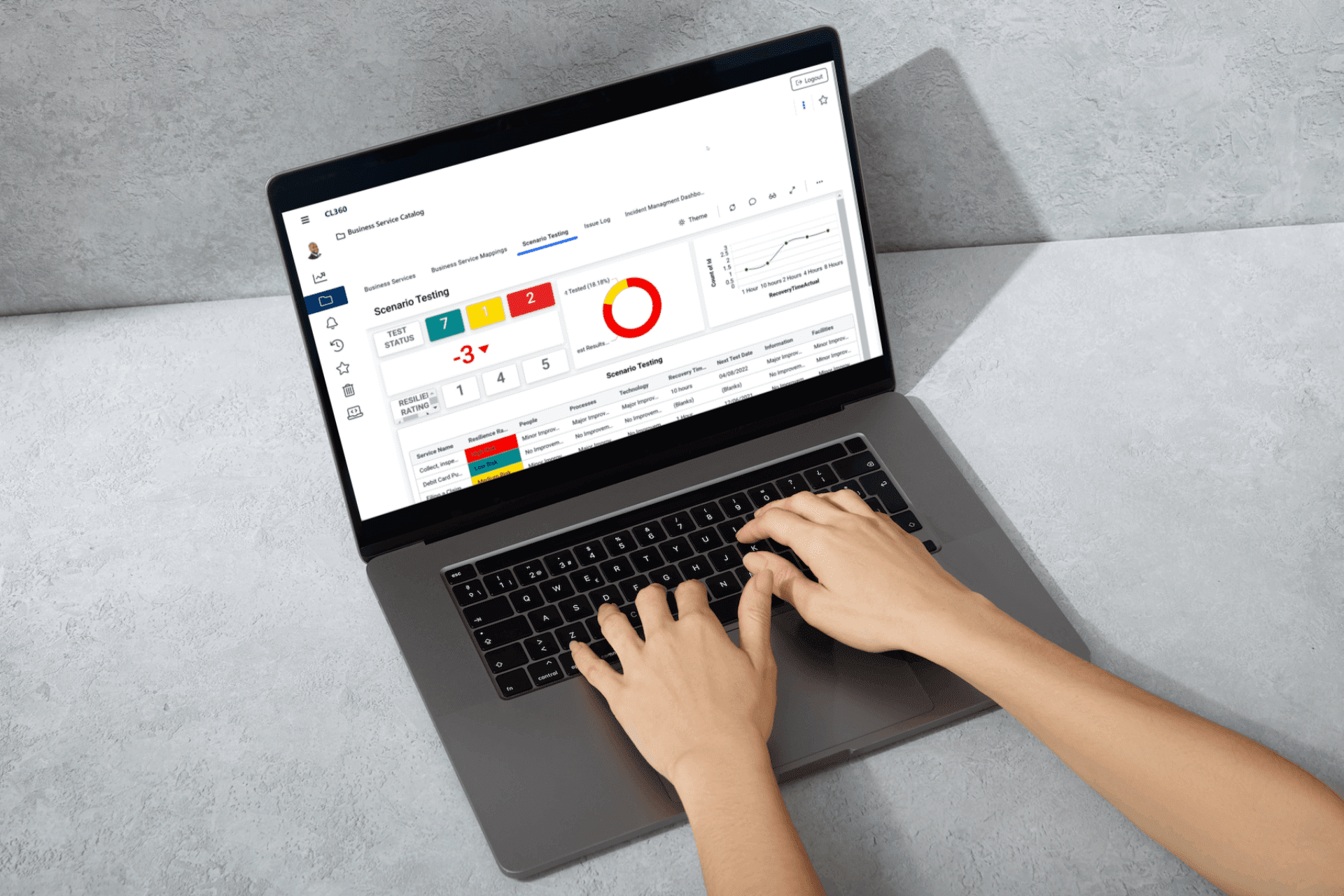
In the modern era, the digital landscape is in a constant state of flux. With technological advancements accelerating at an unprecedented rate, businesses are compelled to adapt swiftly to remain competitive and resilient. Amidst this digital revolution, the significance of business continuity has surged, becoming a cornerstone for enterprises aiming to thrive in this dynamic environment. At the heart of this evolution lies software, a powerful tool that has transformed the way organizations approach, plan, and execute their business continuity strategies.
The Evolution of Business Continuity
Traditional Approaches
Historically, business continuity was often perceived as a reactive measure, primarily focused on recovery after an incident. Traditional approaches leaned heavily on manual processes, which, while reliable to an extent, had their set of limitations:
- Time-Consuming: Manual methods, such as paperwork and face-to-face meetings, were inherently slow, delaying response times during critical situations.
- Prone to Human Error: Without the aid of automated tools, the risk of oversight or miscalculation was considerably higher.
- Lack of Real-time Data: Traditional methods lacked the capability to provide real-time insights, making it challenging to make informed decisions swiftly.
- Scalability Issues: As businesses grew, manual processes became increasingly cumbersome and less efficient.
Modern Approaches
With the dawn of the digital age, the paradigm of business continuity began to shift. The introduction of software solutions revolutionized the field, offering a more proactive, integrated, and efficient approach:
- Proactive Planning: Modern software allows businesses to anticipate potential threats and devise strategies in advance, ensuring they're better prepared for unforeseen challenges.
- Integrated Systems: Software solutions often integrate seamlessly with other enterprise systems, ensuring a unified approach to business continuity.
- Efficiency and Automation: Routine tasks are automated, reducing the margin for error and speeding up processes.
- Data-Driven Decisions: With access to real-time data and analytics, businesses can make informed decisions promptly.
Furthermore, the broader wave of digital transformation has further emphasized the importance of business continuity. As organizations increasingly rely on digital platforms and tools, ensuring uninterrupted operations becomes paramount. The fusion of business continuity software with digital transformation strategies ensures that organizations are not only prepared for disruptions but are also equipped to harness opportunities in the evolving digital landscape.
Key Features of Top Business Continuity Software
Real-time Risk Monitoring
In today's fast-paced digital environment, risks can emerge and evolve rapidly. Real-time risk monitoring is a pivotal feature of top business continuity software. It ensures that organizations can detect potential threats as they arise, allowing for immediate action. By continuously scanning the environment for anomalies or disruptions, businesses can proactively manage risks, minimizing potential damage and ensuring uninterrupted operations.
Integration Capabilities
The power of a business continuity software is amplified when it can seamlessly integrate with other enterprise systems. Integration capabilities ensure a unified approach to risk management, allowing for a streamlined flow of data across platforms. This interconnectedness enhances system communication, ensuring that all parts of an organization are aligned and informed, fostering a cohesive response to any potential disruptions.
Automated Workflows
Efficiency is paramount in incident response. Automated workflows in business continuity software ensure that, in the event of a disruption, predefined processes are triggered without delay. This automation reduces the margin for human error, ensures timely actions, and allows organizations to swiftly mitigate risks and resume normal operations.
Data Analytics
In the realm of business continuity, decisions need to be both swift and informed. Data analytics capabilities in software solutions provide organizations with insights derived from historical data, current metrics, and predictive models. These data-driven insights empower businesses to make strategic decisions, optimizing their response to risks and capitalizing on opportunities.
Mobile Capabilities
The modern business landscape is no longer confined to the office. Mobile capabilities in business continuity software ensure that risk management can be conducted on-the-go. Whether it's a manager accessing critical data during a business trip or a team collaborating remotely during an incident, mobile features ensure that business continuity efforts are always at one's fingertips.

CLDigital's Approach to Business Continuity
Introduction to CL360
CL360 is CLDigital's flagship platform, designed with the modern enterprise in mind. It encapsulates a suite of features tailored to enhance business continuity efforts. From real-time risk monitoring to advanced data analytics, CL360 offers a comprehensive toolkit for organizations aiming to fortify their resilience in the digital age.
Alignment with Top Software Features
CL360 is not just another business continuity software; it's a platform that aligns with, and often exceeds, industry standards. Its real-time risk monitoring capabilities are complemented by robust integration features, ensuring that CL360 stands out as a top-tier solution. Automated workflows, data-driven insights, and mobile capabilities further solidify its position as a leading choice for modern enterprises.
Real-world Applications
The true testament to CL360's capabilities lies in its real-world applications. Numerous enterprises, from diverse sectors, have integrated CL360 into their operations, witnessing tangible improvements in their business continuity efforts. From swiftly mitigating risks to enhancing overall operational efficiency, the success stories associated with CL360 are a testament to its prowess.
Benefits of Integrating Business Continuity Software
Operational Resilience
In the face of unexpected disruptions, the ability of an organization to maintain or quickly resume its operations is paramount. Business continuity software plays a pivotal role in bolstering operational resilience. By providing tools for real-time monitoring, incident response, and recovery planning, such software ensures that businesses can withstand and recover from disruptions with minimal impact. This resilience not only safeguards the organization's bottom line but also its reputation in the market.
Proactive Risk Management
The modern business environment is rife with potential threats, from cyberattacks to natural disasters. Business continuity software empowers organizations to adopt a proactive stance towards these risks. By continuously scanning the environment for potential threats and providing tools for scenario planning, businesses can anticipate and prepare for disruptions, ensuring they're always a step ahead.
Streamlined Compliance
Regulatory landscapes are constantly evolving, and adhering to these regulations is crucial for businesses. Business continuity software simplifies this process by providing tools for compliance monitoring, reporting, and documentation. Automated workflows ensure that compliance tasks are completed timely, and comprehensive reporting tools make audits a breeze. This not only reduces the risk of non-compliance penalties but also instills confidence in stakeholders.
Improved Communication
During a disruption, clear and timely communication is essential. Business continuity software provides platforms for effective communication among teams and with stakeholders. Automated alerts, incident dashboards, and communication templates ensure that all relevant parties are informed, aligned, and ready to act, minimizing confusion and maximizing coordinated response.

Challenges and Solutions
Implementation Challenges
Implementing business continuity software is not without its challenges. Enterprises often grapple with:
- Integration with Existing Systems: Ensuring the new software seamlessly integrates with legacy systems.
- Employee Training: Equipping staff with the skills to utilize the software effectively.
- Cost Concerns: Balancing the investment in software with expected ROI.
- Change Management: Overcoming resistance to new processes and tools.
CLDigital's Solutions
CLDigital, with its deep understanding of the business continuity landscape, offers innovative solutions to these challenges:
- Flexible Integration Options: CL360 is designed to integrate smoothly with a range of enterprise systems, ensuring a unified approach.
- Comprehensive Training Programs: CLDigital offers training modules to ensure teams are well-equipped to harness the platform's capabilities.
- Cost-Effective Solutions: With scalable options, businesses can choose a solution that fits their budget without compromising on features.
- Change Management Support: CLDigital provides resources and support to ensure a smooth transition, fostering organizational buy-in.
SEO Spotlight: Targeted Keywords in Action
Relevance in Modern Enterprise
In the digital age, the language of search engines has become crucial for businesses aiming to expand their reach and impact. Targeted keywords not only enhance visibility but also resonate with the needs and queries of potential clients. Let's explore the practical application and relevance of some of our targeted keywords in the context of modern enterprises:
- Business Continuity Software: As enterprises navigate the complexities of the digital landscape, the need for robust business continuity software becomes paramount. Such software ensures that businesses remain operational and resilient, even in the face of unexpected disruptions.
- Business Resilience Software: Modern enterprises understand that resilience goes beyond mere recovery. Business resilience software equips organizations with tools to anticipate, adapt, and grow amidst challenges, ensuring long-term success.
- Third Party Risk Management Tools: With businesses increasingly relying on external partners, vendors, and suppliers, third party risk management tools have become essential. These tools provide a comprehensive overview of external risks, ensuring that collaborations are secure and beneficial.
- Business Continuity App: The mobile revolution has made on-the-go management a necessity. A business continuity app allows decision-makers to monitor risks, communicate with teams, and make informed decisions, all from the palm of their hand.
- Best Business Continuity Software: In a saturated market, enterprises seek the best business continuity software that aligns with their unique needs and challenges. Such software offers a blend of innovative features, user-friendliness, and scalability.
- ERM Software Solutions: Enterprise Risk Management (ERM) has evolved as a holistic approach to risk. ERM software solutions provide a 360-degree view of organizational risks, from operational to strategic, ensuring that businesses are well-prepared for the future.
Embracing the Future: The Pivotal Role of Business Continuity Software
As we navigate deeper into the digital age, the landscape of business continuity is poised for transformative change. The challenges and disruptions of today are but precursors to the complexities of tomorrow. In this evolving scenario, the role of business continuity software becomes not just beneficial, but indispensable.
The future of business continuity will be characterized by an even greater reliance on data-driven insights, real-time risk monitoring, and proactive planning. Organizations that anticipate these shifts and integrate advanced software solutions will be better positioned to weather uncertainties and seize new opportunities.
Moreover, the integration of business continuity software is not merely a technological upgrade; it's a strategic investment. It's about fortifying an organization's resilience, enhancing stakeholder confidence, and ensuring long-term success in an unpredictable world.
For modern enterprises aiming to thrive amidst challenges and capitalize on opportunities, the message is clear: Embrace the future with proactive software adoption. Equip your organization with the tools and insights to navigate disruptions, and chart a course towards sustained success.

